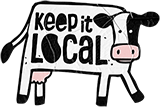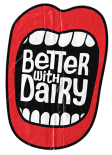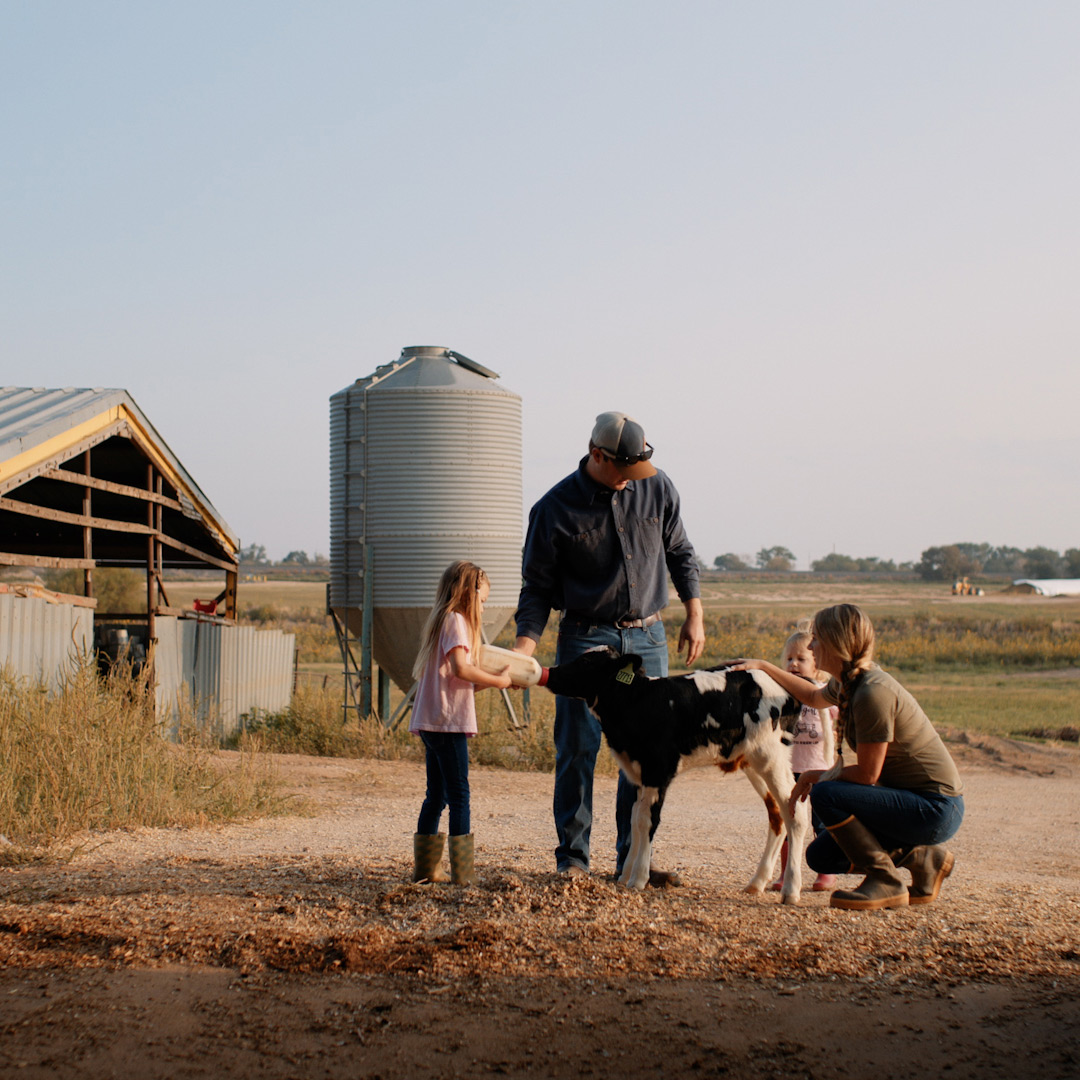LAND
How much space are we taking up? How much soil are we using?
The U.S. dairy industry’s land use was down 21% as of 2017. Our soil is continually restored by a great natural fertilizer, sourced from the cows’ rear ends. 💩💩💩
We use it on our own crops (which help feed the cows – more efficient than shipping in all their feed), and we also compost and package the fertilizer for plant nurseries.
WATER
How much water are we using? How do we avoid contaminating natural bodies of water with manure?
🚰Our water use was down 30% as of 2017. We’ve gotten really good at recycling water. First, we run it through pipes to help cool the warm milk after it comes out of the cows. That water is still clean, so next we use it as drinking water for the cows. Anything they don’t drink washes out the barns. And finally, that poo water goes back on our crops for moisture AND fertilizer (plus, the compost helps the soil retain up to 20% more water, which means it needs less watering overall).🌿
🏴☠️ Creature from the poo lagoon 🏴☠️
After washing out the barns but before going on the crops, the poo water is stored in a “lagoon.” Lagoons are basically man-made ponds, cased in concrete and heavy plastic liners. We pump the water in through underground pipes. A crust naturally forms at the top, which cuts down on odor. And from there, natural bacteria composts the poo so we can use it. Monitoring systems alert us if any waste escapes the lagoon into the soil. We also regularly test local bodies of water to make sure they’re safe.

AIR
Are there lots of greenhouse gases from cows?
Cow farts and cow poop give off methane, a greenhouse gas. What we do about it:
- Nutritionists design cow diets for less gas.
- Poo lagoons (remember from 30 seconds ago?) help reduce odor.
- BEST PART: More dairy farmers are getting methane digesters, systems that actually pull the methane out of the poo so we can use it for electricity on the farm and in the surrounding community. Yep. Cow poo is a renewable energy source. ♻️

Keep it local. The milk you buy at the store was probably produced on a family farm within your region (🙌 fewer food miles 🙌).
Keep it clean. We all follow the high standards of the National Dairy Farmers Assuring Responsible Management (FARM) Program, including best practices in animal care, antibiotic stewardship, biosecurity, environmental stewardship and workforce development (standards that get updated with the latest science every three years). Of course, we also follow regulations from the Environmental Protection Agency (EPA), Natural Resources Conservation Service (NRCS), state departments of agriculture and local governments. And state and federal employees regularly perform both scheduled and surprise inspections.
Overall, our carbon footprint has shrunk 19% since 2007. 👣 We’re gonna need new shoes.👟👟
Reference
Capper JL, Cady RA. The effects of improved performance in the U.S. dairy cattle industry on environmental impacts between 2007 and 2017, Journal of Animal Science, Volume 98, Issue 1, January 2020, skz291, https://doi.org/10.1093/jas/skz291


